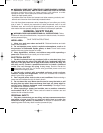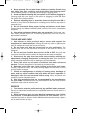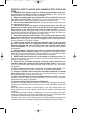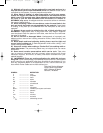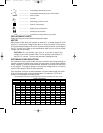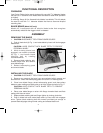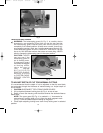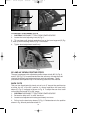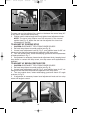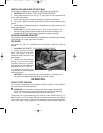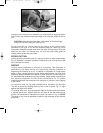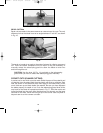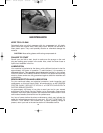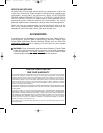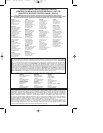
13
cutting line with the line-of-cut indicator Fig. 9. Back saw up slightly and start
motor. Move saw forward keeping the edge of line indicator parallel to line of
cut.
CAUTION: Keep the cord away from cutting area, so it does not get
hung up in the work being cut. See Fig. 14.
Do not force the cut. Let the saw do the cutting at the rate of speed
permitted by the type of cut and the material being cut. When the cut is
completed, release the switch and allow the blade to stop before lifting the
saw from the work. On through-cuts, be sure the lower blade guard is
closed, before setting the saw down.
CROSS-CUTTING
Cutting directly across the grain of a piece of lumber is called crosscutting.
Fig. 14 illustrates a crosscut operation. Position the work so that the cut will
be on the right, as shown.
RIPPING
Cutting wood lengthwise is referred to as ripping. This operation is
performed in the same manner as crosscutting with the exception of
supporting the material to be cut. If material is supported on a large table,
bench or floor, several pieces of scrap stock approximately one inch thick
should be placed beneath the material to allow clearance for the portion of
the saw blade that extends through the material. Large sheets of paneling or
thin plywood supported on saw horses should have 2 x 4’s placed
lengthwise between the horses and the material, to prevent it from sagging
in the center.
For narrow rip cuts, the rip guide, available as an accessory can be used.
The saw is guided by keeping the inner face of the rip guide, Fig. 13, tight
against the edge of the board.
For making wider cuts, such as might be made in plywood and wide sheets,
a wooden guide strip, against which the left edge of the saw base can be
guided, can be tacked or clamped to the work, as shown in Fig. 15. NOTE:
The depth of cut must be adjusted to allow for the thickness of the wooden
guide strip.
Fig. 14
A
900003 - 04-09-02.qxd 4/18/02 7:42 AM Page 13



